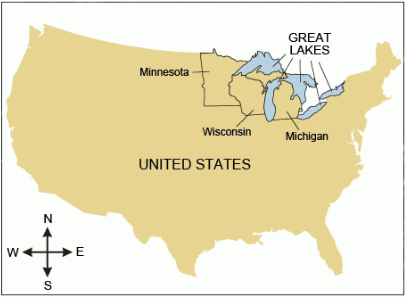

 In nineteenth-century America, practically everything that was built involved wood.Pine was especially attractive for building purposes.It is durable and strong, yet soft enough to be easily worked with even the simplest of hand tools.It also floats nicely on water, which allowed it to be transported to distant markets across the nation.The central and northern reaches of the Great Lakes states—Michigan, Wisconsin, and Minnesota—all contained extensive pine forests as well as many large rivers for floating logs into the Great Lakes, from where they were transported nationwide.
In nineteenth-century America, practically everything that was built involved wood.Pine was especially attractive for building purposes.It is durable and strong, yet soft enough to be easily worked with even the simplest of hand tools.It also floats nicely on water, which allowed it to be transported to distant markets across the nation.The central and northern reaches of the Great Lakes states—Michigan, Wisconsin, and Minnesota—all contained extensive pine forests as well as many large rivers for floating logs into the Great Lakes, from where they were transported nationwide.A.During the nineteenth century, lumbering became a large-scale industry controlled by manufacturing companies rather than a local enterprise controlled by farmers.
B.Technological advances, including the use of steam power, led to increased productivity, efficiency, and commercialization of the lumbering industry.
C.Seasonal changes and severe winters made the development and laying of track for logging railroads slow and difficult.
D.After 1860 farmers continued to be the main suppliers of new timber, but lumbering companies took over its transport and manufacture into wood products.
E.The invention of new technology, such as band saws, allowed American lumbering companies to make a profit by exporting surplus lumber to Britain and other countries.
F.New methods for transporting logs to mills helped transform lumbering from a seasonal activity to a year-round activity.